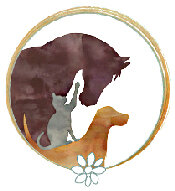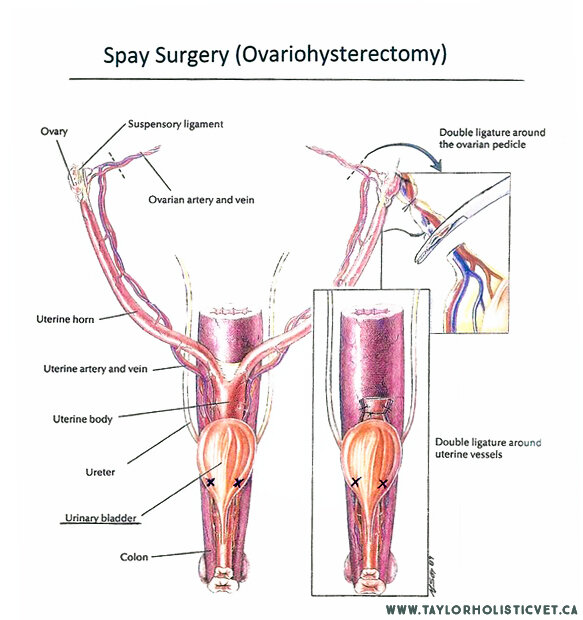
crooked butt syndrome
‘Crooked Butt Syndrome’ is a less than technical description for an abnormal rotation of the sacrum and pelvic bone and fixation of one sacroiliac joint. Dogs and cats with CBS have lost normal symmetrical movement of the hind end. Quadrupeds are essentially REAR WHEEL DRIVE CREATURES! Their power is in the hind end… it is where their ‘engine’ for movement is. When CBS is present they have less movement and power in the hind end due to loss of normal range of motion in the sacrum and one pelvic bone. So when a dog or cat has CBS, the body has to compensate because it still wants to go straight versus veering off to one side slightly — like a car that needs a wheel alignment — the driver has to slightly correct for the pull of the car to one side.
Addressing CBS and early changes in the knee ligament can actually prevent future ACL tears and thus surgery.
READ MORE
⬇
After years of compensation there are detrimental changes in the spine. This contributes to the mobility issues of middle aged and older dogs and cats…. stiffness seen when getting up, trouble with stairs, slower on walks, limping and arthritis.
CBS is also linked to the gradual onset of many cases of ACL tears (injury and tearing of the anterior cruciate ligament in the knee joint). A weakness in the ligament in the knee starts to happen soon after the onset of CBS however it may take years for this weakness in the ligament to progress to the point of a partial or full tear and thus surgical repair.
So What Causes Crooked Butt Syndrome in Dogs & Cats?
Spay / Neuter Surgery is the #1 Cause of 'Crooked Butt Syndrome’!
After surgery the leftover tissues cause a slight pull on the tiny ligaments that tether the bladder in place. This area of tension changes nerve impulses to the sacrum nearby which causes it to slightly tilt and as a result a pelvic bone on one side rotates (becomes crooked and less mobile). There is also a loss of motion to 2 spinal vertebrae in the mid-back. Releasing the increased tension around the bladder automatically changes the position of the sacrum, pelvis and 2 vertebrae. This is the magical part of osteopathy! Chiropractic manipulation of these areas will only last for a few minutes because the root cause is elsewhere (near the bladder).
Once this ‘surgical scar’ or ‘surgical adhesion’ is released (via osteopathy) it never returns! Treatment involves a gentle, painless mobilization of the bladder area through the abdominal wall. In female dogs it takes 1 to 3 treatments to have a permanent change (depends on how old and how tight the scar is). In male dogs it takes 1 to 2 treatments because of less tissue left behind in the neuter surgery in males versus spay surgery in females.
‘X’ marks the adhesions (area of tension) near the bladder. When these are released the sacrum/pelvis returns to normal.
All surgery leaves behind slightly tighter tissue due to cutting, stitching and the normal healing response. Any animal, person, who has had surgery anywhere internally will always have some residual tightness in the surgical area and therefore are potential candidates for osteopathic treatment. Dr. Taylor is a huge advocate for the spaying and neutering of young adult dogs and cats. The ideal situation is to have a few osteopathic treatments as a young animal to catch this issue very early. A lot of people now bring young dogs and cats to Dr. Taylor within a few months of their surgery.
#2 Sudden Fall or Slip
Trauma
A sudden fall or slip can jar the pelvic area causing the sacrum to abnormally rotate due to mechanical force. This can happen in various ways… slipping on ice, wet grass, falling down stairs or during very rough play. In this case the cause is local (sacrum) versus nerve changes coming from an organ issue (spay/neuter, etc). Not all slips or falls lead to CBS, however if a dog or cat’s movement is different after a fall, especially in the hind end, then CBS is likely. There are various ways to treat this local fixation of the sacrum and sacro-iliac joint and can include chiropractic, direct osteopathic manipulation or craniosacral therapy. This is the only version of CBS where a chiropractic manipulation actually achieves a result of improved motion in the hind end.
#4 Intact Male Dogs
Congestion of Prostate
This is also thought to be a hormonal change. Congestion and tightness of the prostate area above the bladder changes nerves to the sacrum and lumbar vertebrae exactly the same as found in males after neuter surgery. Treatment involves gentle mobilization through the abdominal wall of any excessive tension around the prostate and bladder. The result of treatment is an automatic release the sacrum/SI joint on one side along with Lumbar bones 1 and 2. Not all intact males have this prostate issue however it is very common. Dr. Taylor’s theory on this common finding is that many intact males are not used for breeding on a highly regular basis so the prostate as a sexual organ get congested/stagnated.
#3 Intact Female Dogs
Tightness in Ligaments of Ovaries and Uterus
This is thought to be a hormonal change (during the heat cycle) in the fascial attachments of the ovaries and uterus causing nerve changes to the sacrum and lumbar vertebrae just as with the spay surgery adhesion/scar. Not all intact female dogs get CBS. It causes the same changes in mobility of the hind end as with the spayed females. Treatment involves gentle mobilization through the abdominal wall of any excessive tightness around one or both ovaries. The result of treatment is an automatic release the sacrum/SI joint on one side along with Lumbar bones 1 and 2. Magic again! This treatment can also influence infertility since enhancing the motion of the ovaries and uterus can improve blood/lymph/nerve flow and thus the health and function of those organs. Dogs that have had difficulties whelping may have subtle adhesions around their uterus that will benefit from gentle mobilization. Osteopathy is known for improving fertility in some women.
#5 Surgery or Inflammation in the Pelvic Cavity
The most common surgery in this area besides spaying/ neutering is for removal of bladder stones. The patterns of fixation are the same as other causes of CBS, rotated sacrum and fixated SI joint on one side. The most common condition of inflammation would be a bladder infection (cystitis) and when resolved medically with treatment the rotation and fixation of the sacrum and SI joint would self-correct and resolve on its own once the inflammation was gone.



